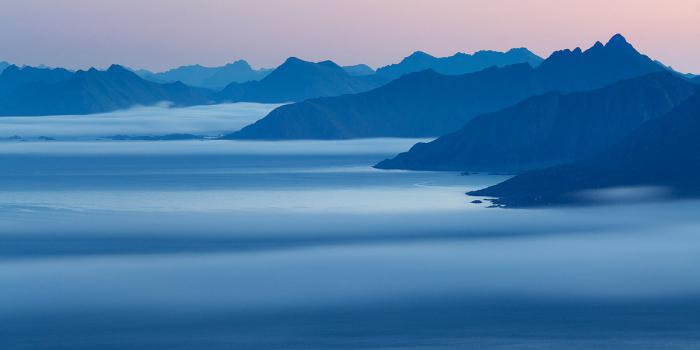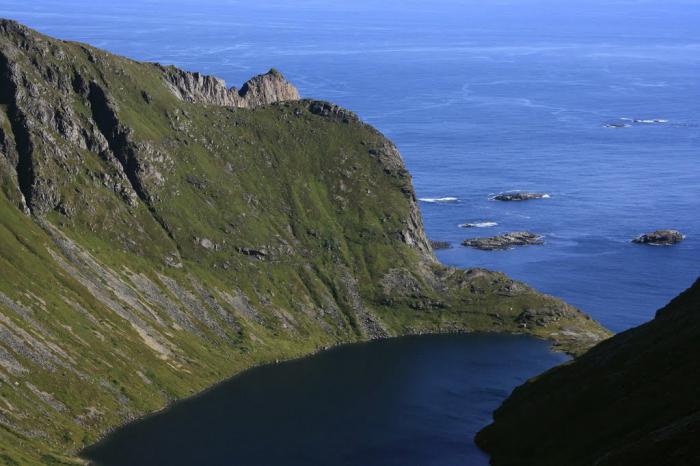The focus of this article will be the mysterious Norwegian Sea. Which ocean does it belong to - the Atlantic or the Arctic? What is the climate and other physical and geographical characteristics? And what sights is it famous for? Read about this and much more in this article.
Where is the Norwegian Sea
There is still debate about the affiliation of the water area to a particular ocean. The Great Soviet Encyclopedia in this regard has discrepancies with the generally accepted point of view. So, it draws the borders of the Arctic Ocean along the circular line of Norway - Shetland and Faroe Islands - Iceland - Jan Mayen - Greenland. The World Hydrographic Organization defines the cordons of this gigantic Arctic water area in a slightly different way. In her view, the Norwegian Sea belongs to the Atlantic. After all, the Arctic Ocean stretches from the pole to the conventional line Greenland - Iceland - the Svalbard archipelago - Bear Island - the northern coast of Scandinavia. Thus, we can state that this is the marginal sea of the Atlantic. Moreover, it has similar hydrographic characteristics. For example, the Atlantic Gulf Stream enters it. The border between the Norwegian and Greenland seas passes through Cape Gerpir in the east of Iceland, the islands of Jan Mayen and Bear.

Physico-geographical characteristics of the water area
The Norwegian Sea borders on the Greenland, North and Barents. It lies on the continental shelf of Eurasia and covers an area of about one million and four hundred thousand square kilometers. The greatest depth in the Norwegian Sea is 3970 m, but on average this parameter is a kilometer and seven hundred meters. In addition, the water area is replete with shallows. The largest are the Lofoten banks and the Kopytova submarine plateau. The salinity of the Norwegian Sea is quite significant - thirty-five ppm. Such a “tropical” indicator is explained by an insignificant flow of fresh rivers, and not by a high level of evaporation, as in the waters near the equator. Another interesting indicator of the Norwegian Sea is the large tides - an average of 3.3 meters. There are many islands in the water area. The largest of them are Annoya, Söroya, Arnoya, Seilann, Lofoten, Ringwassoy. The shelf of the water area hides in its bowels large oil reserves, the development of which is engaged in Norway.

Weather in the Norwegian Sea
According to the Great Russian Encyclopedia, this is the only non-freezing water area of the Arctic Ocean in winter. Despite the fact that most of the sea lies beyond the Arctic Circle, it is not ice bound. The reason for this phenomenon is the Norwegian current, which is a branch of the Gulf Stream. Warm waters from the Caribbean are a favorable factor for the species diversity of flora and fauna. However, contact with cold Arctic air causes fogs and high humidity. Seasonal temperature fluctuations here are insignificant. Winters are mild with a predominance of southwest winds. But they often bring serious storms when the height of the waves reaches nine meters. And in the summer it is cool. If in winter the air temperature varies between marks - 4 - + 4 degrees, then in July it barely warms up to + 10-12. There are fewer cloudy days and strong winds in the summer, but, of course, we can’t talk about any tanning and bathing. Diving is possible only in a heat-insulating suit.
Fauna and flora
Of course, the Norwegian Sea cannot boast of such species diversity as the coral reefs of the Gulf of Thailand, but still it is more inhabited than the neighboring waters of the Arctic Ocean. Warm Gulf Stream not only stores the positive water temperature in the polar latitudes, but also allows many species of plants and animals to exist. Sharks even swim here. From the plant world, mention should be made of kelp kelp, which is produced on an industrial scale, porphyry, fucus and others. In coastal areas, bottom crustaceans and mollusks, sea worms are found. Here lives the largest jellyfish in the world - a giant cyanide. There is fishing for lobsters, lobsters, crab and spiny lobster, scallops and mussels.
sights
What tourist interest is the Norwegian Sea? The photo often presents enchanting paintings of fjords, braids, bays and capes. The sea with strong tides forms indented rocky shores. Many cruises aboard ocean liners offer a journey through the fjords and admire the polar day or the northern lights. No less wonderful is fishing in the Norwegian Sea. In the warm season, people from different countries come here to try their luck. Mostly hunting goes for Atlantic salmon. You can see in the sea and large mammals - finwala, narwhal, blue whale, bowhead whale and killer whale . On pebble beaches there are bird markets and rookeries of seals, belugas and other pinnipeds.